Mint is one of the easiest and most rewarding herbs to grow at home, especially in a kitchen setting where you can harvest fresh leaves whenever you need them. Known for its refreshing flavor and many health benefits, mint adds a vibrant touch to a variety of recipes and beverages. In this guide, we’ll explore how to grow mint indoors, along with a delicious recipe for honey citrus mint tea to enjoy your fresh mint to the fullest.
Why Grow Mint Indoors?
Mint is not only easy to grow but also incredibly versatile. Here are a few reasons to add mint to your kitchen garden:
- Easy to Maintain: Mint is hardy and requires minimal care. It thrives in various conditions, making it ideal for indoor gardening.
- Convenient Access: Growing mint in your kitchen lets you grab a few fresh leaves any time for cooking, tea, or even garnishing dishes.
- Natural Air Freshener: Mint has a pleasant, refreshing scent that can help freshen up your kitchen.
- Health Benefits: Mint is packed with antioxidants, aids in digestion, and can help relieve stress and nausea.
Best Mint Varieties for Indoor Growing
There are many types of mint to choose from, each with unique flavors and uses. Here are some popular varieties that are great for indoor gardening:
- Spearmint: The most common variety, spearmint has a mild, sweet flavor and is often used in teas, salads, and savory dishes.
- Peppermint: With a stronger, cooler flavor, peppermint is excellent for teas and desserts.
- Chocolate Mint: This unique variety has a hint of chocolate aroma, making it perfect for desserts and flavored drinks.
- Apple Mint: Apple mint has a subtle apple-like flavor, adding a fruity touch to dishes and beverages.
How to Grow Mint in Your Kitchen
Growing mint indoors is straightforward, especially if you follow these steps:
1. Choosing the Right Container
Mint is a fast-growing herb and can become invasive if not contained. Choose a pot that is at least 8-10 inches wide to allow room for the roots to spread. A container with drainage holes is essential, as mint roots dislike being waterlogged.
2. Using the Right Soil
Mint prefers well-draining, rich soil with a pH between 6.0 and 7.0. You can use a general potting mix and add compost or organic matter to boost nutrients.
3. Planting Mint
- From Cuttings: Mint grows easily from cuttings. Simply take a 3-4 inch cutting from an existing plant, remove the lower leaves, and place it in water until roots form (usually within a week). Then, transplant it into a pot with soil.
- From Seeds: Although growing mint from seeds takes longer, it’s still feasible. Plant seeds ¼ inch deep in moist soil, keeping the pot in a warm, sunny spot. Germination can take about 10-15 days.
4. Light Requirements
Mint thrives in bright, indirect light. Place your mint plant near a sunny window, where it can get at least 4-6 hours of light daily. If your kitchen doesn’t receive enough natural light, consider using a small grow light.
5. Watering and Humidity
Mint enjoys moist soil but doesn’t like to sit in water. Water your mint plant once the top inch of soil feels dry to the touch. Mist the plant occasionally, especially in dry indoor conditions, to keep it healthy and thriving.
6. Pruning and Harvesting
Pruning is essential to encourage bushier growth and prevent legginess. Pinch off the top leaves regularly, and trim back long stems. Harvesting mint is easy – simply snip off leaves as needed. Regular pruning also prevents the plant from flowering, which can reduce the leaf’s flavor.
7. Fertilizing Your Mint Plant
Mint is a light feeder and doesn’t require frequent fertilizing. Apply a balanced, water-soluble fertilizer monthly during the growing season. Avoid over-fertilizing, as it can diminish the flavor of the leaves.
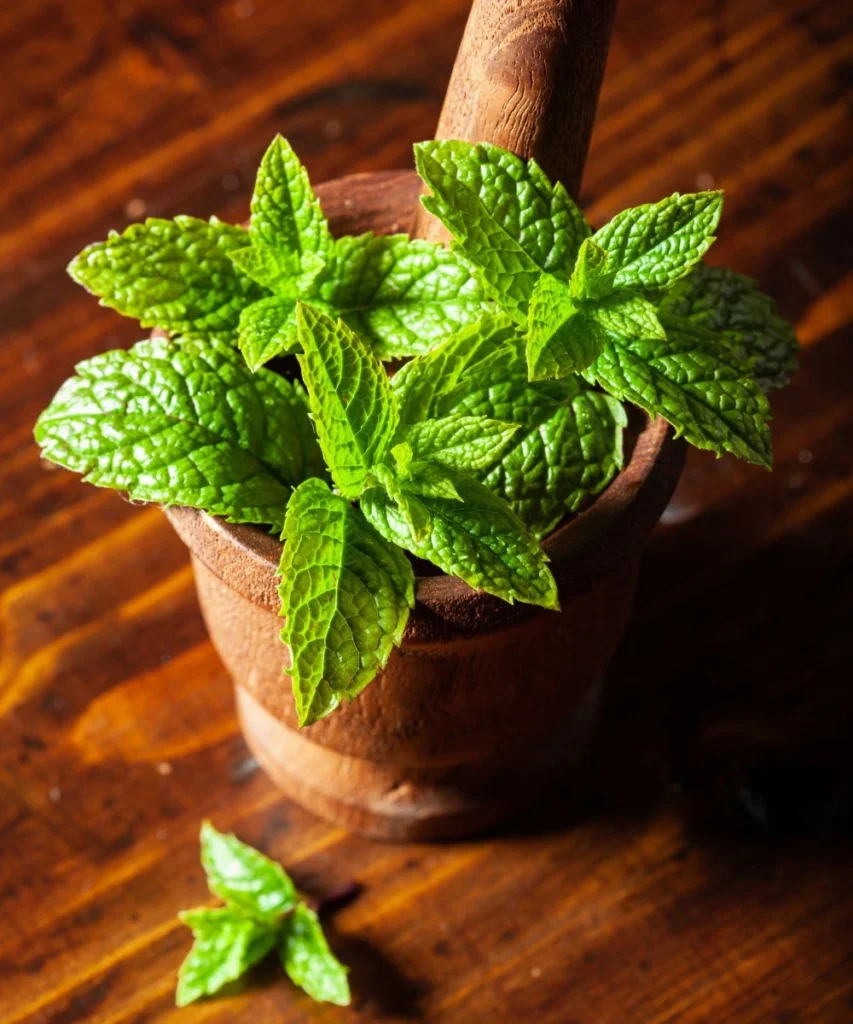
Troubleshooting Common Mint Problems
Mint is generally hardy but can encounter a few issues. Here’s how to keep your mint plant healthy:
- Yellowing Leaves: This may indicate overwatering or poor drainage. Check that your pot has drainage holes and reduce watering if necessary.
- Leggy Growth: Legginess usually happens when the plant doesn’t receive enough light. Move it closer to a sunny spot or use a grow light.
- Pests: Mint can attract aphids and spider mites. Treat pests with a gentle insecticidal soap or rinse the leaves under water to remove them.
How to Use Fresh Mint in Your Kitchen
Mint is a versatile herb that can be used in a variety of recipes:
- Beverages: Mint is a classic ingredient in teas, mojitos, and lemonades.
- Salads: Add fresh mint leaves to fruit or vegetable salads for a refreshing flavor boost.
- Garnishes: Mint sprigs make an attractive garnish for dishes and drinks.
- Cooking: Mint complements lamb, fish, and a variety of sauces and dressings.
Honey Citrus Mint Tea Recipe
Honey citrus mint tea is a delicious, soothing beverage perfect for enjoying the fresh flavor of mint. Here’s how to make it with your homegrown mint.
Ingredients:
- 1 handful of fresh mint leaves
- 1-2 cups of water
- 1 tablespoon of honey (adjust to taste)
- 1 tablespoon of fresh lemon or orange juice
Instructions:
- Prepare the Mint: Rinse the mint leaves to ensure they’re clean. Tear the leaves slightly to release their oils.
- Boil Water: Bring the water to a gentle boil, then remove it from heat.
- Steep the Mint: Place the mint leaves in a teapot or cup, and pour the hot water over them. Cover and steep for 5-10 minutes, adjusting the time for your preferred flavor strength.
- Add Honey and Citrus: Strain the mint leaves out, then add honey and fresh lemon or orange juice. Stir well.
- Serve: Enjoy your tea warm, or let it cool and serve it over ice for a refreshing iced version.
This tea is soothing, hydrating, and full of antioxidants, making it a wonderful way to enjoy the benefits of mint.

Health Benefits of Mint
Mint is packed with nutrients and offers a variety of health benefits:
- Aids Digestion: Mint is known to soothe the stomach and improve digestion. It’s often used to relieve indigestion, gas, and bloating.
- Rich in Antioxidants: Mint contains antioxidants that protect cells from damage and reduce inflammation.
- Promotes Fresh Breath: The natural menthol in mint acts as a breath freshener and can also help reduce bacteria in the mouth.
- Supports Respiratory Health: The menthol in mint can help open airways, making it useful for relieving congestion and respiratory discomfort.
- Relieves Stress and Anxiety: Mint’s calming effect can help reduce stress and promote relaxation.
FAQs
Does mint grow well indoors?
Yes, mint grows exceptionally well indoors when provided with the right conditions. It thrives in containers, making it perfect for kitchens or small spaces. Ensure the pot has good drainage and place it in a spot with indirect sunlight for optimal growth. Regular pruning helps keep the plant healthy and encourages fresh, flavorful leaves.
Does mint plant need sunlight?
Mint plants need sunlight but prefer indirect light. Place your mint in a location where it can receive 4-6 hours of bright, filtered sunlight daily. If natural light is limited, grow lights can be a great substitute to keep your mint plant thriving indoors.
Is mint hard to grow?
Mint is one of the easiest herbs to grow, even for beginners. It’s a hardy plant that adapts well to various conditions and requires minimal care. As long as it gets sufficient light, water, and occasional pruning, mint will grow quickly and vigorously indoors.
Does mint grow back after cutting?
Yes, mint grows back after cutting. Regular harvesting actually promotes growth, as it encourages the plant to produce more stems and leaves. Just make sure not to cut more than one-third of the plant at a time to avoid stressing it.
Does mint plant purify air?
Yes, mint plants help purify indoor air. They release oxygen and can filter out certain toxins, improving air quality in your home. Additionally, their fresh scent adds a natural aroma to your indoor space.
Can mint grow in water only?
Yes, mint can grow in water alone! Place fresh mint cuttings in a glass of water, ensuring the nodes are submerged. Keep the glass in a spot with indirect light and change the water every few days. Within a couple of weeks, roots will develop, and the mint will continue to grow.

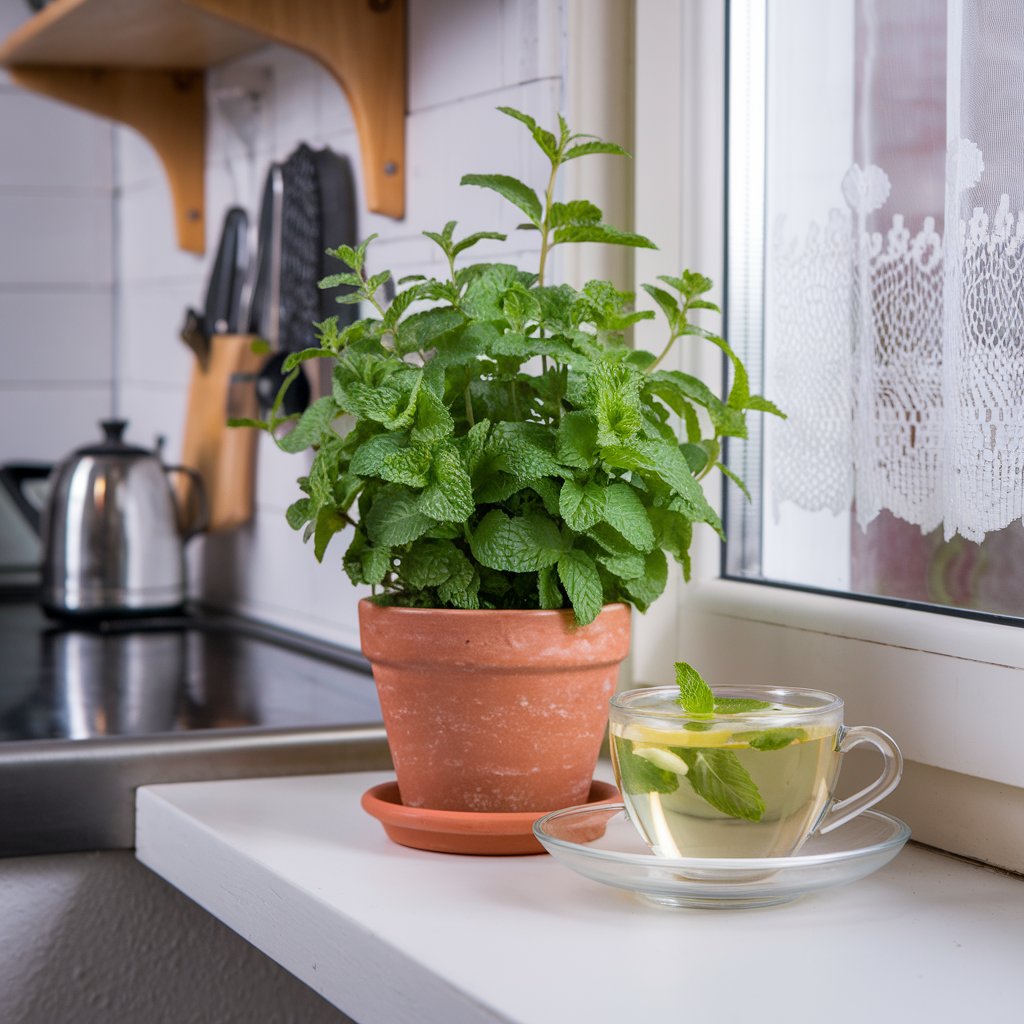
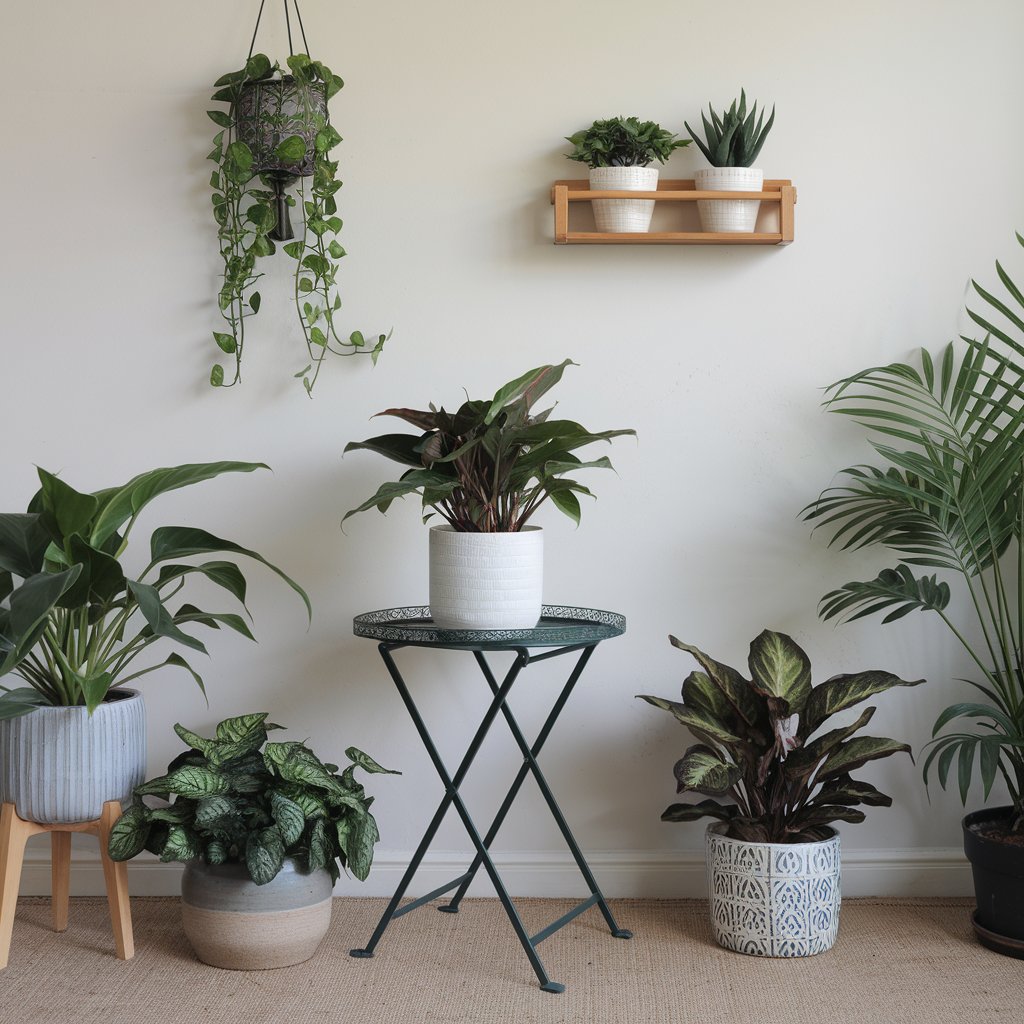
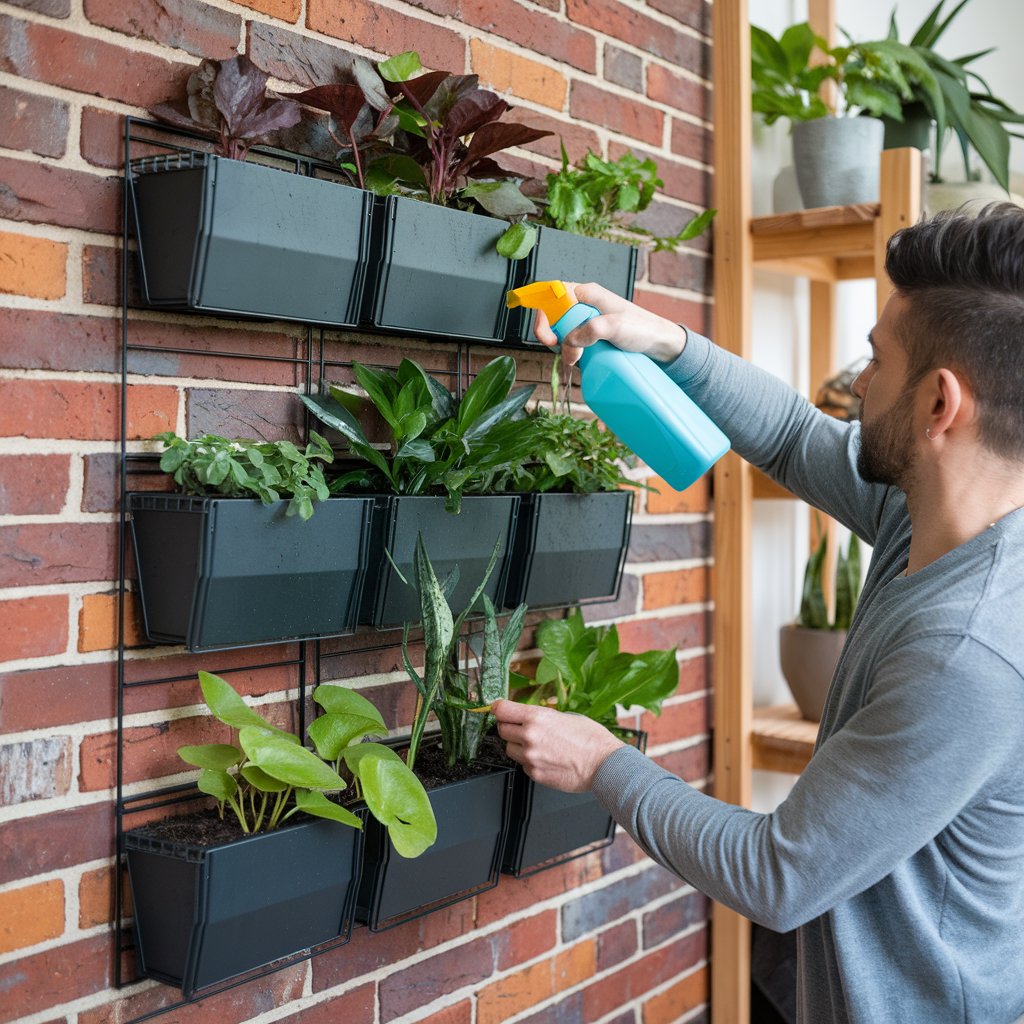
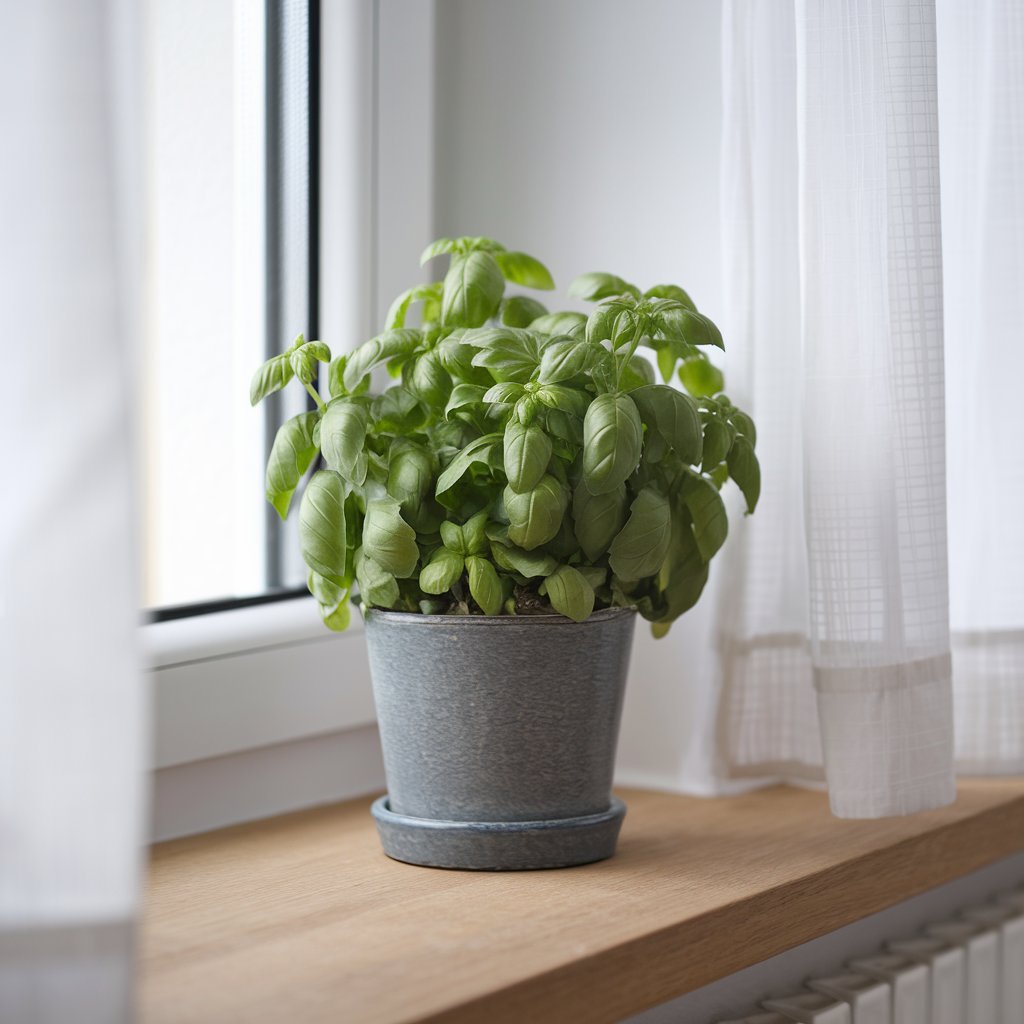
Pingback: 10 Indoor Herbs That Thrive in Low Light — Perfect for Every Apartment! - My Garden Vibes